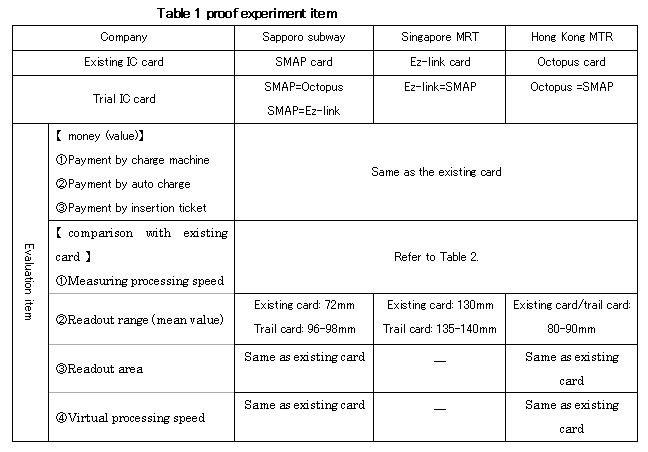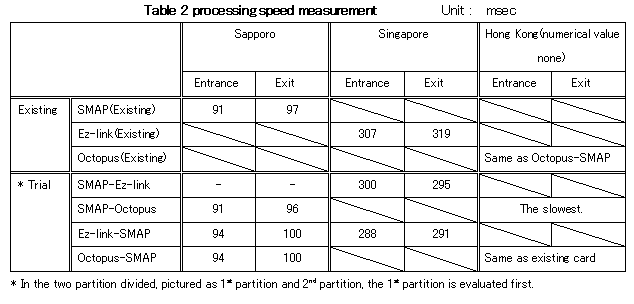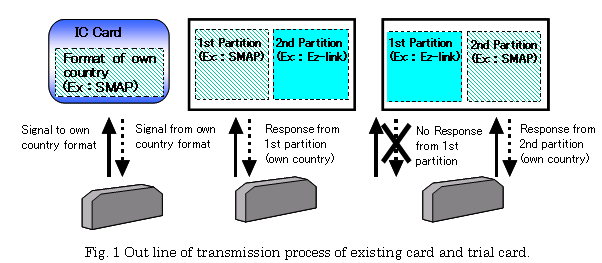● Summary
|
summary 1. Back ground and the purpose of this research (1)To bring about a common traffic IC card in East Asia including Japan. The use of traffic IC card in East Asia, especially in South
Korea and Hong Kong etc. is remarkable, where 10 million cards are being
issued. Further in Japan the Suica Card being issued by East Japan Railway
Company 10 million. At the same time to improve the benefits and the convenience
of the user, and aiming to increase the user, it is being suggested to
break the wall between each individual company and make a card that can
be commonly used or shared. 2. Research out line We preformed a trial experiment of the common type IC card that can be
used in Sapporo Shiei subway, Singapore underground (MRT) and Hong Kong
underground railway (MTR). We conformed the technology with a trial IC
card type C whit the same standards as the high speed contact less IC
card (FeliCa) being used in Japan, Singapore and Hong Kong . In Japan,
among the railway companies, the IC cards used conforms to the cyber net
standards in processing speed and transmission efficiency, so if this
type C, IC card conforms to this standard it will be easy to use commonly.
But because there are no international standards of this type using the
same Type C traffic IC card cannot be used commonly every country. 2.2 The Result of the Experiment The 3 companies did a trial experiment from 2003 November to 2004 January.
In February a mid term appraisal meeting was held. The result of the trail
experiment is according to tables 1 and 2. As shown in tables 1 and 2 the common IC card with memory partition technology, carries out charges and payment of money (value) without any trouble, processing speed, read out range, read out area, virtual processing speed is no less inferior to the existing cards of the various companies, and has been proven to be good enough to put into use.
Further, as for the virtual processing speed there are some numerical values between the existing card and the trial card. In the Ez-link and Octopus card too the processing speed is different, but it is a level that can be disregarded. |
|
|
issue |
Reports No.52/2005 Jul. |
|
stocks |
in stock(weight:440g thickness:9mm) We distribute all reports on request . If You desire mailing , click here. |
detail |
detail(Japanese)(PDF:2.9MB) |





